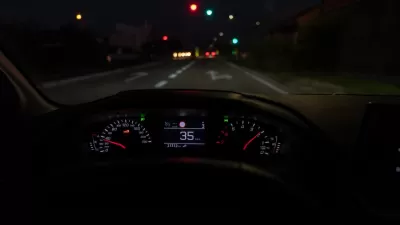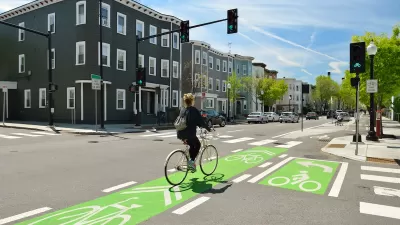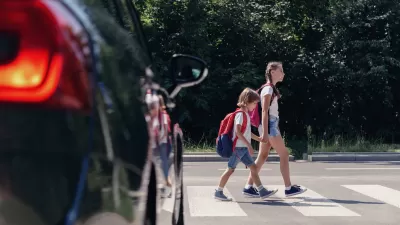Author Jeff Speck discusses the progress made since he first wrote Walkable City–and how far we still have to go to build streets that are safe for all.

With the tenth anniversary of Walkable City coming up, Governing's Jake Blumgart talks with author Jeff Speck "about the stickiness of 2020’s street reforms, why the traffic engineering profession is so resistant to reform, and how remote work can boost urban fortunes."
Speck has seen a lot of change since he first wrote Walkable City, including the mainstreaming of New Urbanism. "Intellectually, and in terms of platforms you see among progressive politicians, there has been a lot of ground gained since 2012," he admits. "But it’s still super hard to get these things done, as we’re seeing now with the reversion of some of these COVID-19 amenities back to the way they were before. Typically, a minority of people who speak loudly are pretty effective in overruling majority public opinion in favor of more walkable places."
When it comes to fears that the many city dwellers who bought cars during the pandemic will add to urban congestion, Speck says "[t]he number of cars on the street is an outcome of the number of lanes we put on the street in congested cities. The number of cars that we see in our cities will be determined by people’s willingness to put up with congestion, not by any other factor." Additionally, "[a]s people come back to transit, but also continue to take advantage of Zoom, you’re going to see an equilibrium emerge which hopefully means fewer car trips than before."
Despite the proven link between widened roads and increased traffic known as induced demand, Speck says, the engineering establishment hasn't caught up, with "maintenance" projects easily turning into widening projects. "Often, fixing a road is a Trojan horse for widening the road." According to Speck, part of the confusion about pedestrian safety "surrounds the fact that street design as a profession evolved out of highway design. The manual that all the engineers use has 'highway' in its title, even though it’s used to design local streets. What makes a highway safe is absence of potential for conflict, absence of friction. That’s the opposite of what makes a street safe."
Speck also discusses the importance of slowing cars through reversing one-way streets, the institutional barriers to reducing or eliminating parking requirements, and the importance of creating truly pedestrian-friendly spaces.
FULL STORY: Vehicles Are Still Firmly in Control of City Streets

Montreal Mall to Become 6,000 Housing Units
Place Versailles will be transformed into a mixed-use complex over the next 25 years.

Planetizen Federal Action Tracker
A weekly monitor of how Trump’s orders and actions are impacting planners and planning in America.

DARTSpace Platform Streamlines Dallas TOD Application Process
The Dallas transit agency hopes a shorter permitting timeline will boost transit-oriented development around rail stations.

Congressman Proposes Bill to Rename DC Metro “Trump Train”
The Make Autorail Great Again Act would withhold federal funding to the system until the Washington Metropolitan Area Transit Authority (WMATA), rebrands as the Washington Metropolitan Authority for Greater Access (WMAGA).

Trump's “Able Bodied” Public Housing Limits Could Displace Over 300,000 New Yorkers
As part of 43% cut to federal rental assistance, Trump is proposing a two-year limit on public housing tenure for “able bodied adults.”

Nine Ways to Use Curb Space That Aren’t Parking
California’s new daylighting law bans parking within 20 feet of crosswalks. How can cities best use this space?
Urban Design for Planners 1: Software Tools
This six-course series explores essential urban design concepts using open source software and equips planners with the tools they need to participate fully in the urban design process.
Planning for Universal Design
Learn the tools for implementing Universal Design in planning regulations.
City of Mt Shasta
City of Camden Redevelopment Agency
City of Astoria
Transportation Research & Education Center (TREC) at Portland State University
City of Camden Redevelopment Agency
Municipality of Princeton (NJ)
Regional Transportation Commission of Southern Nevada





























